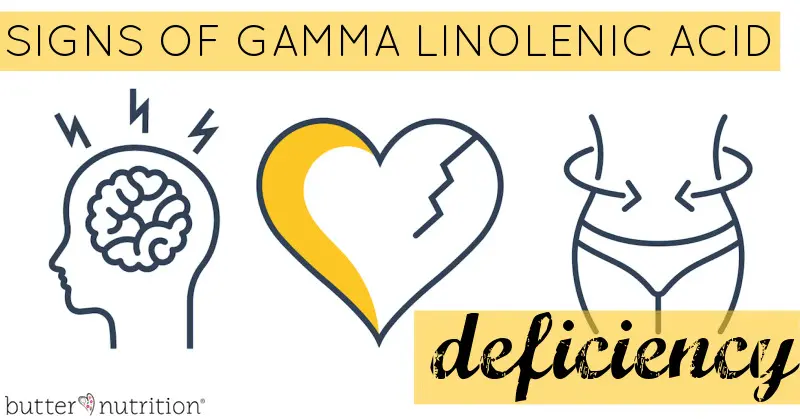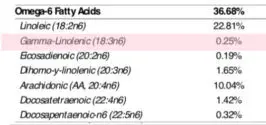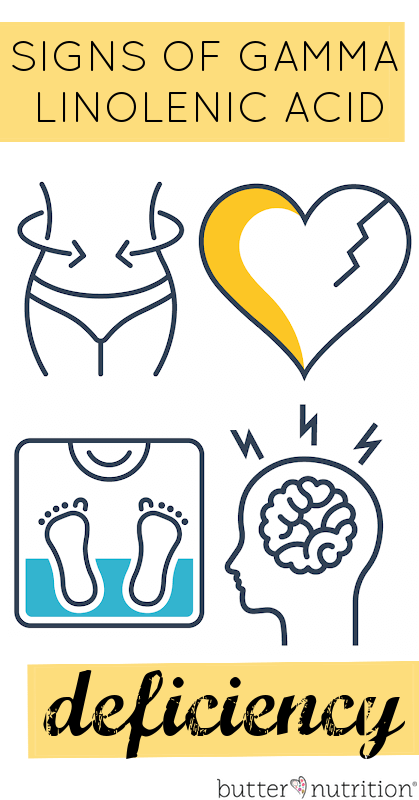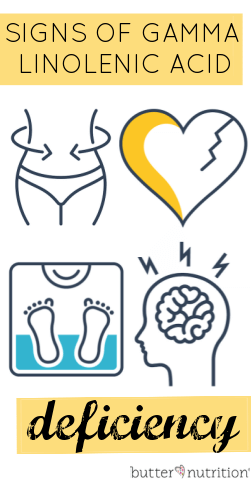 You probably haven't heard much about gamma linolenic acid (GLA) deficiency, but it's a super common fatty acid deficiency (I find it in about 90% of my clients) that has huge ramifications on your cellular health and inflammation status. When it comes up in mainstream news, it's typically being touted for its skin, hair and nail perks.
You probably haven't heard much about gamma linolenic acid (GLA) deficiency, but it's a super common fatty acid deficiency (I find it in about 90% of my clients) that has huge ramifications on your cellular health and inflammation status. When it comes up in mainstream news, it's typically being touted for its skin, hair and nail perks.
Deficiency
Common signs of GLA deficiency can be vague, but include:
- inflammation
- dry hair
- skin issues
- bumps on the back of your arms
- cracked fingertips
- unwanted gene expression
- increased body fat
GLA Status Determinants
GLA is a potent anti-inflammatory omega-6 fatty acid that is synthesized in the body from linolenic acid (LA). Linolenic acid is found abundantly in omega-6 fatty acids like safflower, sunflower, sesame, corn, and cottonseed oils, which there is no shortage of in the standard American diet.
If the precursor to GLA is abundant in most people's diet, why is GLA deficiency so rampant?
It all comes down to conversion modulators as well as your general health.
You see, there are certain modulators that support the conversion of LA into GLA via the enzyme delta-6-desaturase. These include:
- Zinc
- B6
- B3
- Magnesium
- Vitamin C
- Vitamin E
If your body's deficient in some of these, your GLA conversion status will likely be impaired.
And then there are also modulators that block or reduce the conversion of LA into GLA. They include:
- Age
- Insulin
- Coffee
- Alcohol
- Trans fats
So as you can see, improving your GLA status naturally requires a full body nutrition approach, although there are also shortcuts...
Sources of Preformed GLA
The biggest shortcut to skipping any conversion issues (which should be addressed as well) is taking preformed GLA.
Sources of preformed GLA include [1,2,3,4]:
- leafy greens
- hempseed
- oats
- spirulina
- breastmilk (source for infants)
- borage oil (20-27% GLA)
- evening primrose oil (7-14% GLA)
- black current seed oil (15-20% GLA)
Benefits
The perks of GLA sufficiency are abundant, so take note below of what optimizing your levels could mean for you:
GLA can have the following impact:
- Anti-inflammatory, antithrombotic, antiproliferative (inhibit cell growth in tumor cells), lipid-lowering potential: "GLA, via conversion to PGE1, exhibits anti-inflammatory, antithrombotic, antiproliferative, and lipid-lowering potential. It also enhances smooth muscle relaxation and vasodilation. In addition, EFAs including GLA are important constituents of membrane phospholipids, including the mitochondrial membrane, where they enhance the integrity and the fluidity of the membrane" [1]
- Body fat mass reduction: A study from 2000 linked GLA to reducing body fat accumulation. "It was suggested that dietary gamma-linolenic acid attenuates body fat accumulation through the increase in gene expressions of uncoupling protein 1 in brown adipose tissue. An increase in hepatic peroxisomal fatty acid oxidation may also contribute to the physiological activity of gamma-linolenic acid in decreasing body fat mass." [3]
GLA has also been studied for a number of clinical applications with promising outcomes for: [1]
- Rheumatoid Arthritis
- Atopic Eczema
- Cardiovascular Disease
- Asthma
- Premenstrual Syndrome
- Attention Deficit/Hyperactivity Disorder
- Cancer
- Dry Eye Syndrome
- Osteoporosis
Testing
My favorite test for GLA is a simple at home blood-spot collection kit. After collecting a small drop of blood on a sample card, you pop your sample in the mail and get your results emailed in approximately one week. I also created a 30 minute video training you can watch to help you understand your results and what you can do about it.
I typically test myself every 6 months or so to make sure I'm keeping my fatty acid balance in check to combat cellular inflammation.
Find the simple at-home test kit here.
A Sane Nutrition Approach
My approach to nutrition is pretty simple — make sure your body has all the raw materials it needs (and the right environment) to support your body's natural desire for health.
Give your body what it needs (based on testing), and then get out of the way.
Live your life without stressing about it.
If you need help, you can find it here.
PIN IT:
References:
- https://altmedrev.com/wp-content/uploads/2019/02/v9-1-70.pdf
- https://pubmed.ncbi.nlm.nih.gov/17168669/
- https://pubmed.ncbi.nlm.nih.gov/11079375/
- https://www.ncbi.nlm.nih.gov/pmc/articles/PMC3768453/
- https://www.researchgate.net/publication/319099698_Spirulina_A_source_of_gamma-linoleic_acid_and_its_applications








Diane
What is the optimal number we are shooting for? The reference range is .04 to .70%, so if a person has a number of .25% is that just right but .40% is too high? This is totally unclear to me. TX
Catherine Crow, NTP
Hi Diane,
.40% is ideal for GLA.
Abundantly,
Catherine